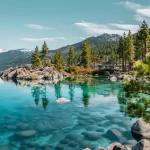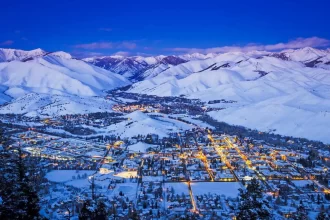Have you ever dreamed of exploring stunning U.S. destinations without breaking the bank? The secret lies in traveling during the off-season. Whether you’re planning a beach getaway, a mountain escape, or a city adventure, off-season travel not only saves you money but also offers unique experiences without the crowds. Here’s a comprehensive guide to finding those elusive off-season discounts and making your dream trips a reality.
What Is Off-Season Travel?
Off-season travel refers to visiting a destination during its less popular months, typically when tourist numbers drop. For instance, beaches are quieter in the fall, ski resorts are more affordable in the summer, and major cities have fewer visitors in winter (except during holidays). By targeting these periods, you’ll find cheaper flights, accommodations, and activities.
The Benefits of Off-Season Travel
- Lower Costs: Flights, hotels, and activities often slash their prices during slower months.
- Fewer Crowds: Enjoy attractions without long lines or packed spaces.
- Authentic Experiences: Interact more with locals and immerse yourself in the culture.
- Flexible Booking: Last-minute deals are more common when demand is lower.
How to Identify Off-Seasons for Popular U.S. Destinations
Different destinations have distinct peak and off-peak seasons. Here’s a quick breakdown:
- Beach Destinations:
- Off-season: Fall (September-November) and early spring (March-May).
- Examples: Myrtle Beach, Outer Banks, and Gulf Shores.
- Perks: Warm weather lingers, but prices drop after summer crowds leave.
- Mountain Resorts:
- Off-season: Late spring and summer (April-August).
- Examples: Aspen, Jackson Hole, and Lake Tahoe.
- Perks: Enjoy hiking, biking, and lake activities at a fraction of winter prices.
- Major Cities:
- Off-season: Winter (January-February) and mid-summer (July-August).
- Examples: New York City, Chicago, and San Francisco.
- Perks: Reduced hotel rates and fewer tourists at iconic landmarks.
- National Parks:
- Off-season: Late fall and winter (October-March).
- Examples: Yellowstone, Yosemite, and Grand Canyon.
- Perks: Serene landscapes and wildlife sightings.
Tips for Scoring Off-Season Discounts
- Track Flight Prices Early: Use tools like Google Flights, Hopper, or Skyscanner to monitor airfare. Set alerts for price drops and look for mid-week departures, which are typically cheaper.
- Be Flexible with Dates: Traveling mid-week or shifting your trip by a few days can lead to significant savings. Shoulder seasons (right before or after peak season) often offer great deals.
- Leverage Discount Websites: Platforms like Groupon, Travelzoo, and Expedia frequently feature off-season packages. Check for bundled deals on accommodations, activities, and transportation.
- Contact Hotels Directly: While online booking sites are convenient, calling hotels can sometimes yield better deals. Mention you’re visiting during the off-season and ask about special offers.
- Consider Alternative Accommodations: Vacation rentals, hostels, and boutique hotels often reduce rates during off-peak months. Look on Airbnb, Vrbo, or Hostelworld for unique stays.
- Look for Local Discounts: Many destinations offer discounts for residents or regional visitors during off-seasons. Check local tourism boards or city websites for exclusive deals.
- Join Loyalty Programs: Frequent traveler programs for airlines, hotels, and car rentals can unlock off-season perks like discounted stays or free upgrades.
Off-Season Activities to Explore
Traveling during the off-season doesn’t mean sacrificing fun. Here are some activities that shine when crowds are thin:
- Beachcombing and Sunrise Walks: Experience serene beaches perfect for quiet reflection or family picnics.
- Wine Tastings: Visit vineyards in California’s Napa Valley or Oregon’s Willamette Valley when tasting rooms are less crowded.
- Wildlife Watching: Many national parks and wildlife refuges offer unique seasonal spectacles like elk migrations or whale watching.
- Cultural Events: Attend local festivals, art shows, or theater performances that cater to smaller audiences.
- Outdoor Adventures: Take advantage of discounted rates for kayaking, hiking tours, or ziplining.
Relatable Anecdote: A Personal Success Story
Last year, I scored an amazing deal to Key West in September. While most people were back to school or work, I enjoyed sunny days, quiet beaches, and incredible seafood—all at half the peak-season price. By checking last-minute deals, I found a beachfront hotel offering 40% off, and my flight was under $200 round-trip. It was proof that off-season travel is not only affordable but also rewarding.
Common Concerns About Off-Season Travel—And How to Address Them
- Weather Worries:
- Solution: Research typical weather patterns and pack accordingly. Even if rain is forecasted, plan indoor activities like museums or spas.
- Limited Attractions:
- Solution: Check seasonal hours in advance and look for alternative activities. Smaller crowds often mean more personalized experiences.
- Fewer Dining Options:
- Solution: Use apps like Yelp or TripAdvisor to find highly rated local restaurants that stay open year-round.
Tools and Resources for Planning Off-Season Trips
- Flight Trackers: Google Flights, Hopper, Skyscanner.
- Hotel Deals: Booking.com, Hotels.com, Trivago.
- Package Deals: Travelzoo, Groupon, Expedia.
- Local Info: Destination websites, tourism boards, and Facebook groups.
Challenge Yourself: Try an Off-Season Trip!
This year, I challenge you to plan an off-season getaway. Choose a destination, research its off-peak months, and start hunting for deals. You’ll not only save money but also gain a new appreciation for the road less traveled. Share your plans and experiences in the comments below—I’d love to hear about your adventures!
Final Thoughts
Traveling during the off-season isn’t just a way to save money; it’s an opportunity to see a different side of your favorite destinations. With a little research and flexibility, you can unlock incredible experiences without the high costs. So, where will your next off-season adventure take you?












